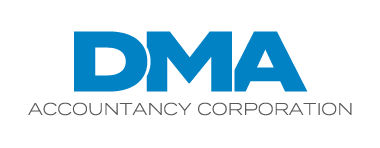When you go to the doctor, the first thing the medical staff likely does is check vital signs such as your temperature and blood pressure. They do so because, if any of these measurements are outside the norms, the doctor may need to elevate your level of care.
Similarly, as a construction company owner, you should regularly check key performance indicators (KPIs) of your business. That way, you can monitor its financial health and equipment maintenance — and determine whether you need to address any pressing issues more urgently.
Calculate and benchmark
Certain ratios, which are typically calculated using your financial statements, can serve as particularly valuable KPIs. They enable you to gauge how your company is doing, compare its current position to past results and even see how you’re measuring up against other similar construction businesses.
Indeed, industry “benchmarking” can provide an early warning of financial risks. Data is available from a variety of sources, including the Construction Financial Management Association (CFMA).
The CFMA’s 2022 Construction Financial Benchmarker report (as of this writing, the most recent one available) provides a variety of financial ratios and other KPIs, broken down by company size (based on revenue volume) and industry sector. The right measures for your company will depend on factors such as its size and specialty, but here are a few examples:
Current ratio (current assets ÷ current liabilities). A valuable KPI for construction businesses, current ratio measures liquidity — that is, the ability to satisfy short-term liabilities with cash and other liquid assets. In the CFMA’s report, the average current ratio was 1.8 overall and 2.6 for smaller businesses (those with less than $10 million in revenue).
Months in backlog (backlog ÷ [revenue ÷ 12]). This indicates the number of months it’ll take to complete all signed or committed work. A lower ratio may signal that the company needs new contracts to maintain consistent revenue. In the CFMA’s report, the average was 9.2 overall and 7.1 for smaller construction companies.
Debt to equity (total debt ÷ net worth). This measures your construction business’s use of leverage. A high ratio enables you to earn more on invested equity but also heightens your exposure to risk. In the CFMA’s report, the average ratio was 1.2 overall and 0.7 for smaller companies.
Working capital turnover (revenue ÷ working capital). This ratio indicates the amount of revenue generated by each dollar of working capital. As a rule, a higher number is better — though an extremely high ratio could raise a red flag that your working capital is stretched too thin. In the CFMA’s report, average working capital turnover was 6.6 overall and 4.3 for smaller construction businesses.
Monitor equipment, too
Some contractors wait until equipment breaks down before servicing it. Monitoring the right KPIs and using data analytics can allow you to anticipate when maintenance or replacement parts will be needed, minimizing downtime and lost productivity.
How do you get the data? Sensors embedded in many types of equipment can collect real-time data such as fuel usage, mileage, hours of operation, engine temperature and fluid levels. Tracking and acting on these data points allows you to perform “predictive maintenance” rather than be forced into crisis mode when a breakdown occurs.
Get regular checkups
Even a healthy construction business can benefit from regular KPI-based checkups. In fact, most financially sound companies get and stay that way by keeping up with the numbers.
© 2023


Recent Comments